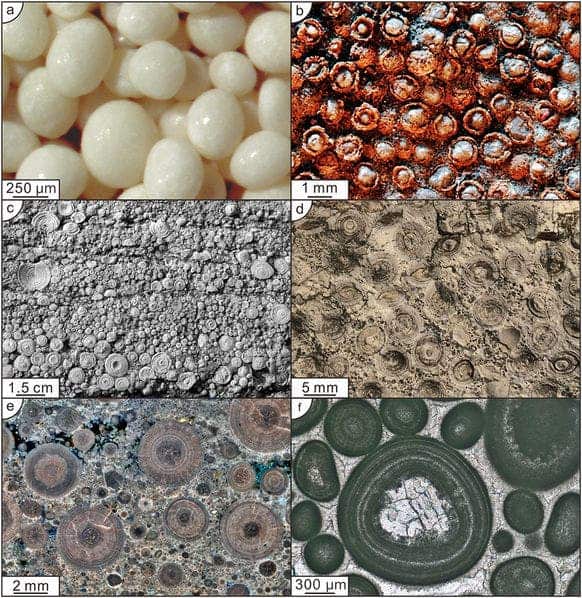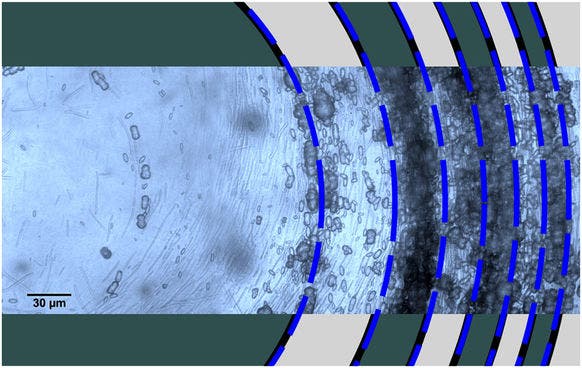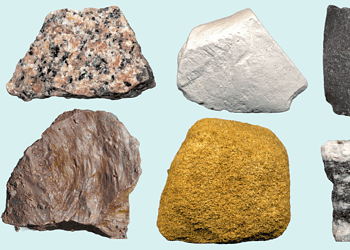New research shows that several famous buildings including the Pentagon in the US or the British Museum in London are giant heaps of microbes. No, really.

Image credits Batchelor et al., 2017, Scientific Reports.
The one thing these buildings have in common is that they were erected using a special kind of rock called oolithic limestone. It gets this name from the tiny carbonate (CaCO3) beads which make up the material — they resemble tiny eggs in shape, and the term ‘oolith‘ is drawn from the Greek word for egg. The rock resembles fish roe or tightly-packed styrofoam in texture and is a quality, highly appreciated building material. Its mineral composition lends the limestone hardiness, durability, and a pleasant color, while its oolithic texture makes it easy to cut and sculpt in any direction.
The traditional view is that these ooids form from grains rolling across ocean floors and collecting sediments as they go. When they grow too big for currents to move them along, these ooids stack and fuse together with carbonate material precipitated from the surrounding water. New research from the Australian National University (ANU), however, comes to propose a much buggier origin story for ooliths — using a mathematical model, scientists arrived at the conclusion that the ooids were made of mineralized microbes forming concentric layers.
Microbe-beads

Image credits Batchelor et al., 2017, Scientific Reports.
“Jurassic oolite in England has been used to construct much of the City of Bath, the British Museum and St Paul’s Cathedral,” said first author Bob Burne in a news release. “Mississippian oolite found in Indiana in the US has been used to build parts of the Pentagon in Virginia and parts of the Empire State Building in New York City.”
“We have proposed a radically different explanation for the origin of ooids that explains their definitive features. Our research has highlighted yet another vital role that microbes play on Earth and in our lives.”
The team used mathematical modeling to simulate how ooliths form and identify the most likely mechanism of their growth. The algorithms they used to simulate the process were based on systems designed to describe how brain tumors develop. The most likely process of oolith formation, the one that best explains their size and internal mineralization patterns, the team explains, is the mineralization or microbial biofilms — in short, the fossilization of microbes and bacteria.
This process would explain the strikingly ordered structures seen in ooids, with very cleanly-defined concentric layers around a central point. It would also explain why ooids have roughly consistent maximum sizes despite a plethora of different environmental condition across the world’s oceans — something which the previous hypothesis never really explained in a satisfactory manner. Burne thinks the results debunk the popular “snowball theory” that ooids were formed by grains rolling on the seafloor and accumulating layers of sediment.
The paper “A biofilm and organomineralisation model for the growth and limiting size of ooids” has been published in the journal Scientific Reports.






